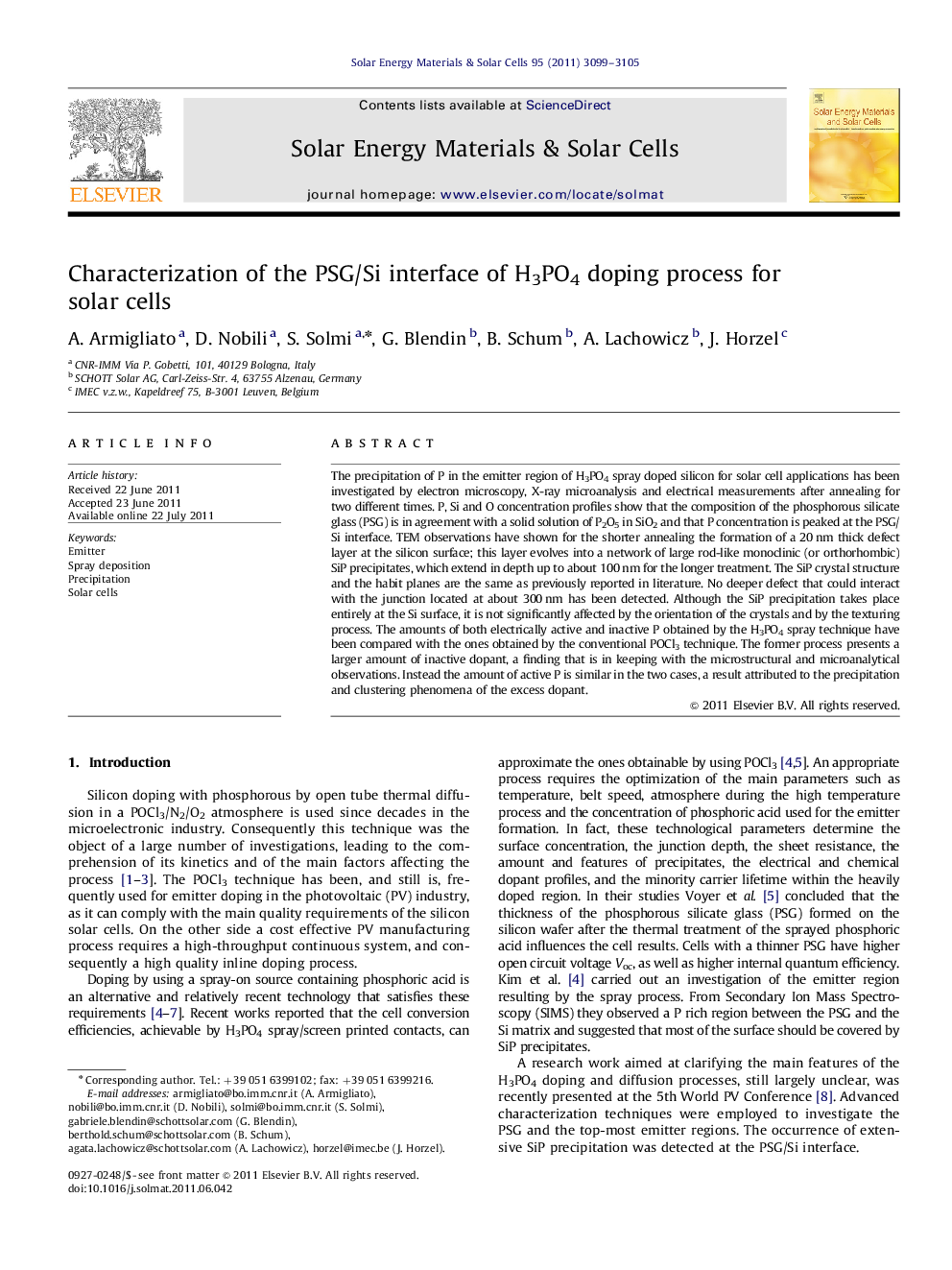| Article ID | Journal | Published Year | Pages | File Type |
|---|---|---|---|---|
| 79366 | Solar Energy Materials and Solar Cells | 2011 | 7 Pages |
The precipitation of P in the emitter region of H3PO4 spray doped silicon for solar cell applications has been investigated by electron microscopy, X-ray microanalysis and electrical measurements after annealing for two different times. P, Si and O concentration profiles show that the composition of the phosphorous silicate glass (PSG) is in agreement with a solid solution of P2O5 in SiO2 and that P concentration is peaked at the PSG/Si interface. TEM observations have shown for the shorter annealing the formation of a 20 nm thick defect layer at the silicon surface; this layer evolves into a network of large rod-like monoclinic (or orthorhombic) SiP precipitates, which extend in depth up to about 100 nm for the longer treatment. The SiP crystal structure and the habit planes are the same as previously reported in literature. No deeper defect that could interact with the junction located at about 300 nm has been detected. Although the SiP precipitation takes place entirely at the Si surface, it is not significantly affected by the orientation of the crystals and by the texturing process. The amounts of both electrically active and inactive P obtained by the H3PO4 spray technique have been compared with the ones obtained by the conventional POCl3 technique. The former process presents a larger amount of inactive dopant, a finding that is in keeping with the microstructural and microanalytical observations. Instead the amount of active P is similar in the two cases, a result attributed to the precipitation and clustering phenomena of the excess dopant.
Graphical abstractDefect evolution at the PSG–Si interface for H3PO4 doped Si.Figure optionsDownload full-size imageDownload as PowerPoint slideHighlights► P precipitation in H3PO4 spray doped silicon wafers. ► H3PO4 spray doped process presents large amounts of monoclinic SiP precipitate on Si surface. ► X-ray microanalysis shows that P is peaked at the PSG/Si interface. ► TEM observations evidenced that junction region is free of extended defects. ► Compare amounts of electrically active and inactive P of H3PO4 and POCl3 techniques.
